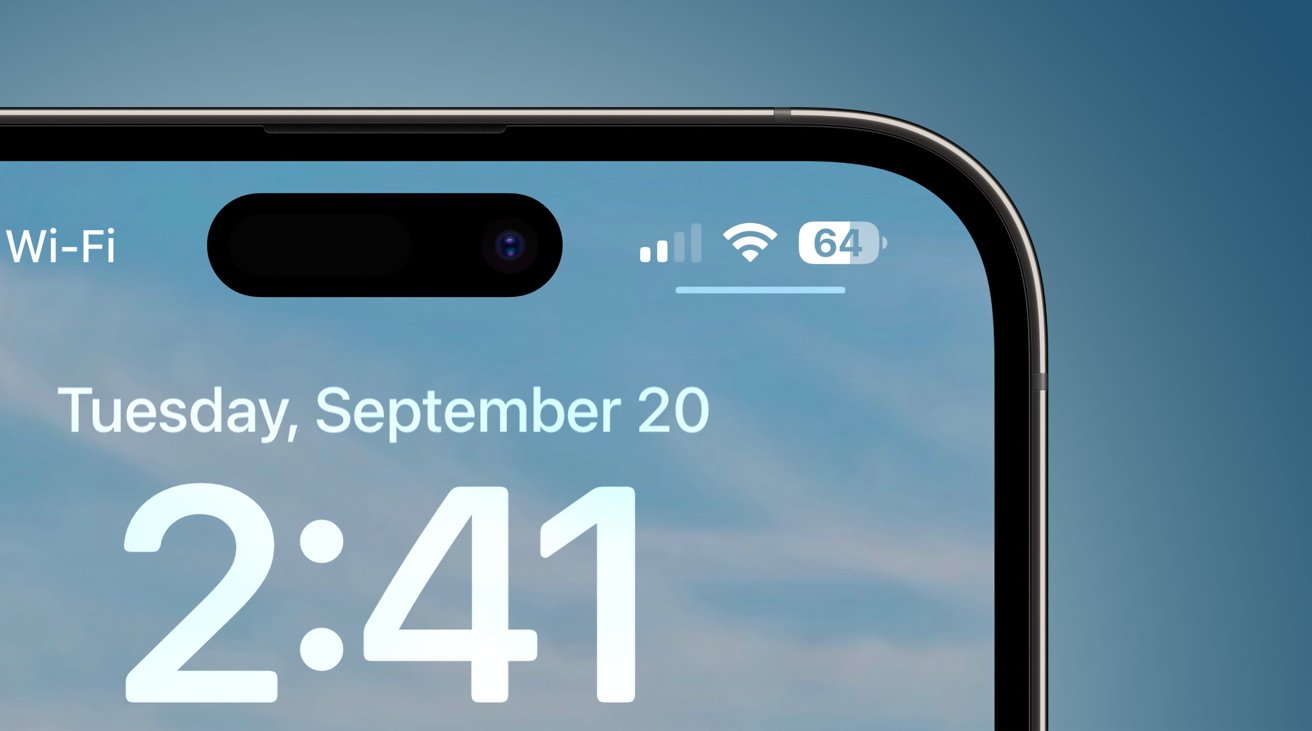Paste issue fixed & battery indicator refined in new iOS 16.1 beta
Apple's iOS 16.1 developer beta released on Tuesday fixes a bug relating to pasting permissions, as well as makes revisions to how the battery indicator works.

Apple released the second developer beta for iOS 16.1 on Tuesday, and early exploration of the release reveals a few interesting additions to the iPhone operating system.
The first is a bug that has plagued iOS 16 users with prompts whenever they go to copy and paste data from one app into another. The repeated prompts have annoyed users, and Apple did confirm on Monday that it would be looking into the matter.
In the iOS 16.1 beta, it seems that Apple has fixed the bug that has caused the problem.
Another is a change to the battery indicator. In iOS 16, Apple added an option that allowed a percentage to be shown in the battery indicator instead of a visually depleting battery icon, on most currently-used iPhones. The new beta appears to combine the two concepts together.

The old filled battery icon (left), the new beta indicator (right)
Seen in the beta, the indicator now takes the form of the battery percentage, complete with the battery in the background. However, the battery now depletes its white color to give a visual representation of battery level, with the rest of the indicator turning grey.
More details of changes Apple has made to the beta are still being searched for, and will most likely surface over the coming days.
Read on AppleInsider

Apple released the second developer beta for iOS 16.1 on Tuesday, and early exploration of the release reveals a few interesting additions to the iPhone operating system.
The first is a bug that has plagued iOS 16 users with prompts whenever they go to copy and paste data from one app into another. The repeated prompts have annoyed users, and Apple did confirm on Monday that it would be looking into the matter.
In the iOS 16.1 beta, it seems that Apple has fixed the bug that has caused the problem.
Another is a change to the battery indicator. In iOS 16, Apple added an option that allowed a percentage to be shown in the battery indicator instead of a visually depleting battery icon, on most currently-used iPhones. The new beta appears to combine the two concepts together.

The old filled battery icon (left), the new beta indicator (right)
Seen in the beta, the indicator now takes the form of the battery percentage, complete with the battery in the background. However, the battery now depletes its white color to give a visual representation of battery level, with the rest of the indicator turning grey.
More details of changes Apple has made to the beta are still being searched for, and will most likely surface over the coming days.
Read on AppleInsider

Comments
Me, I’m fine doing the minimal cognitive processing — when it’s red I know it’s time to charge soon. When it’s a low single digit I know I have very little time left, just minutes. Doesn’t really seem like a problem that needs solving.
The battery indicator gives the user something that they can actually act on. If the battery level is low they can plug their device into a charger, put it in low power mode, quit playing the game they’re playing, quit their endless social media scrolling, or quit using the device entirely until it’s absolutely needed.
The two signal strength indicators are much less actionable, and especially so with less technically savvy users, which is probably the greater majority of users. Sure, these indicators can inform users who understand what the indicators mean about why their device may be having a hard time communicating, or communicating slowly, but what users can actually do about it is not obvious. If you’re cellular signal is low when you’re in your home, like mine always is, what are you expected to do? Pack up and move? I suppose if you’re driving around in your car you can scan the horizon for a cell tower and drive closer to it.
I won’t go on about this any more than to say that it’s one thing to inform users that there is a problem, but it’s far more useful if you can tell users what to to about it, i.e., how to fix the problem. The remedy based approach is not always possible, but consideration for pursuing a remedy based approach should be a priority. In other words, the screen space currently devoted to the signal strength indicators could be reduced (perhaps to red-yellow-green dots), not to mention the totality useless carrier name, to give more space for indicators that provide more actionable information, like remaining battery runtime.